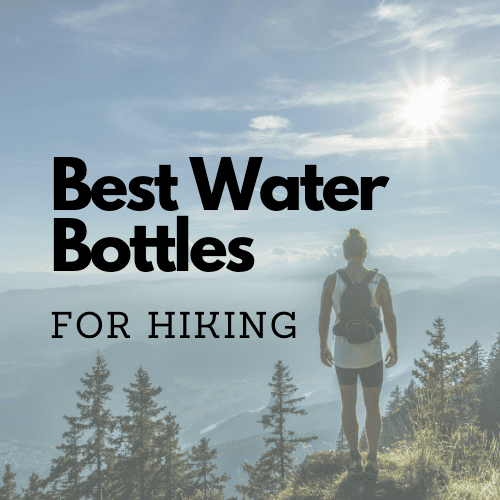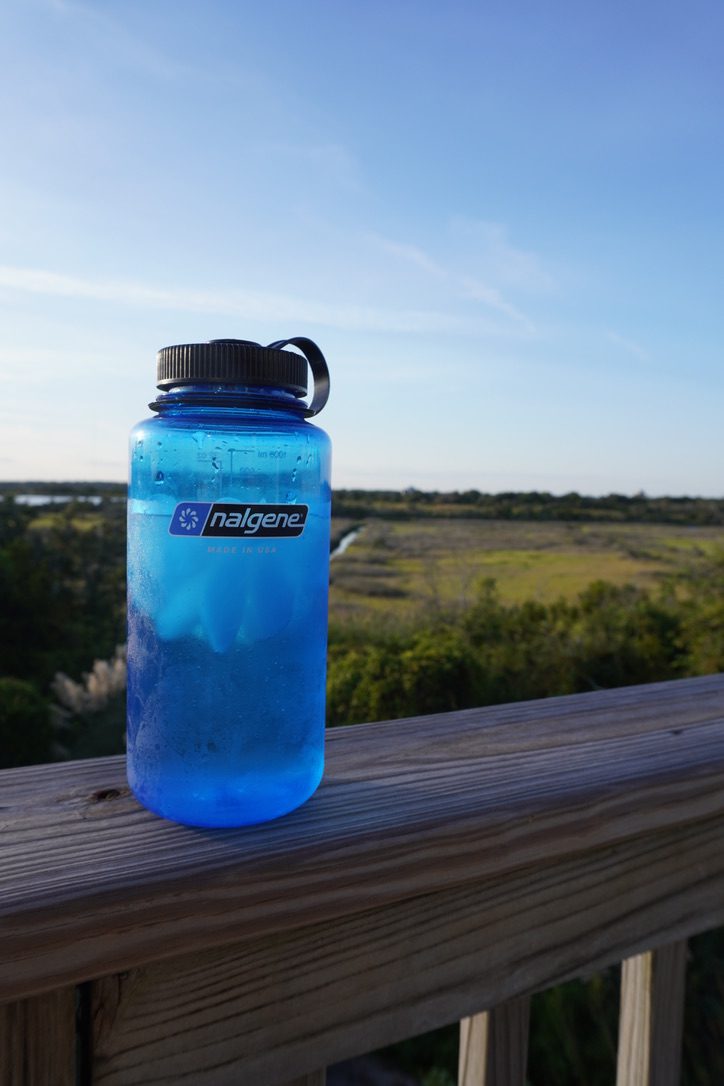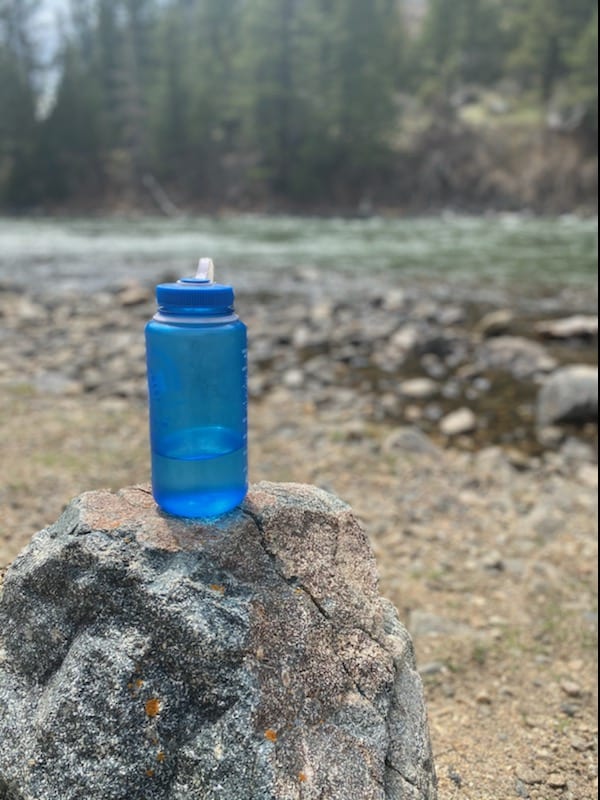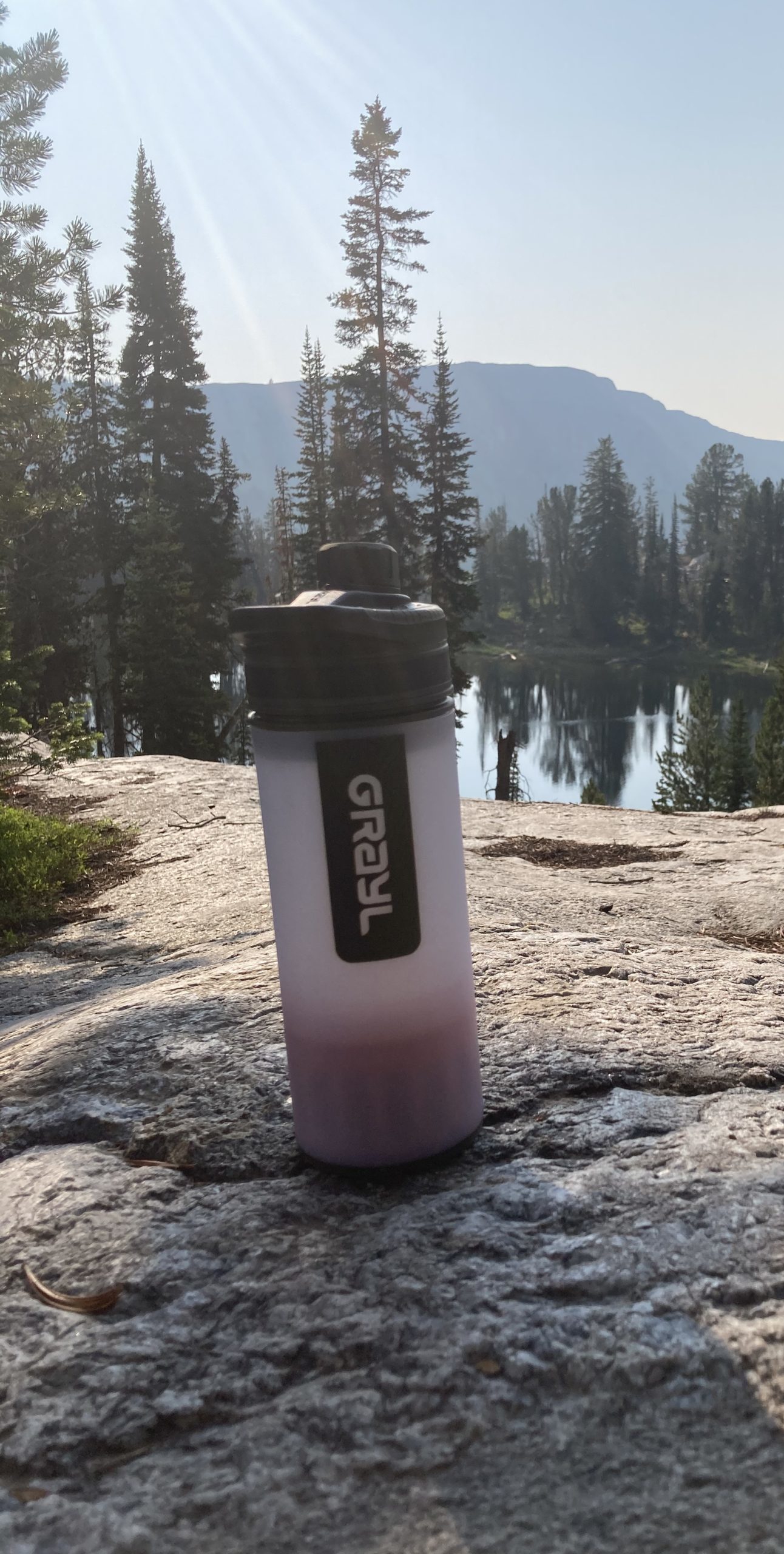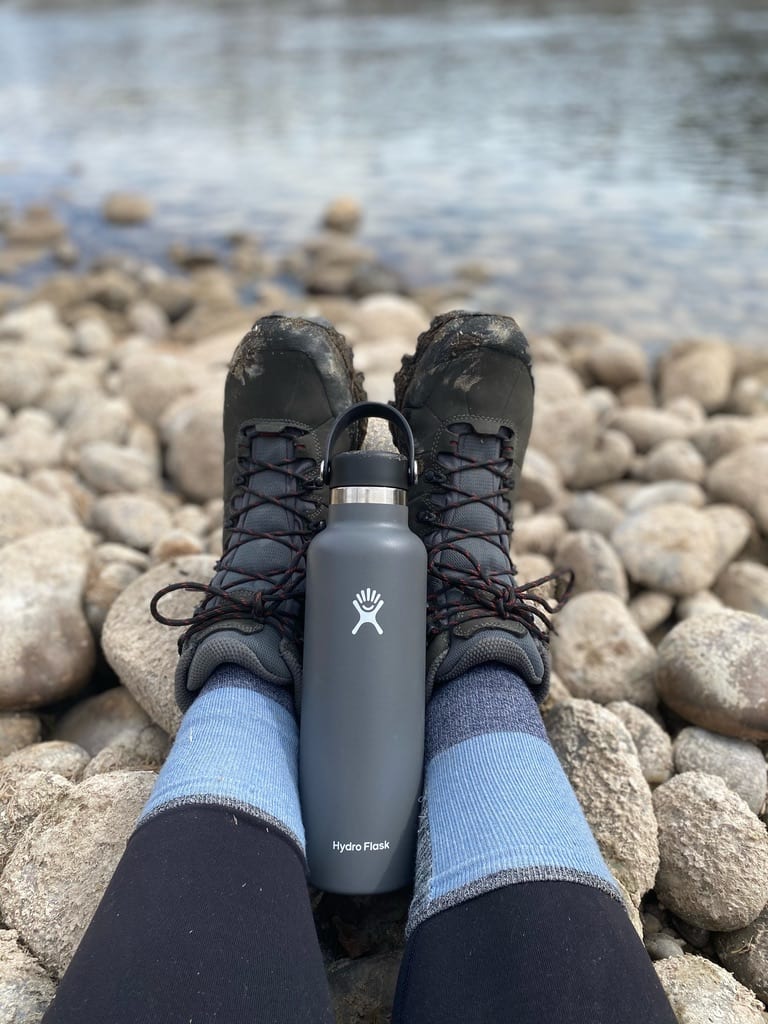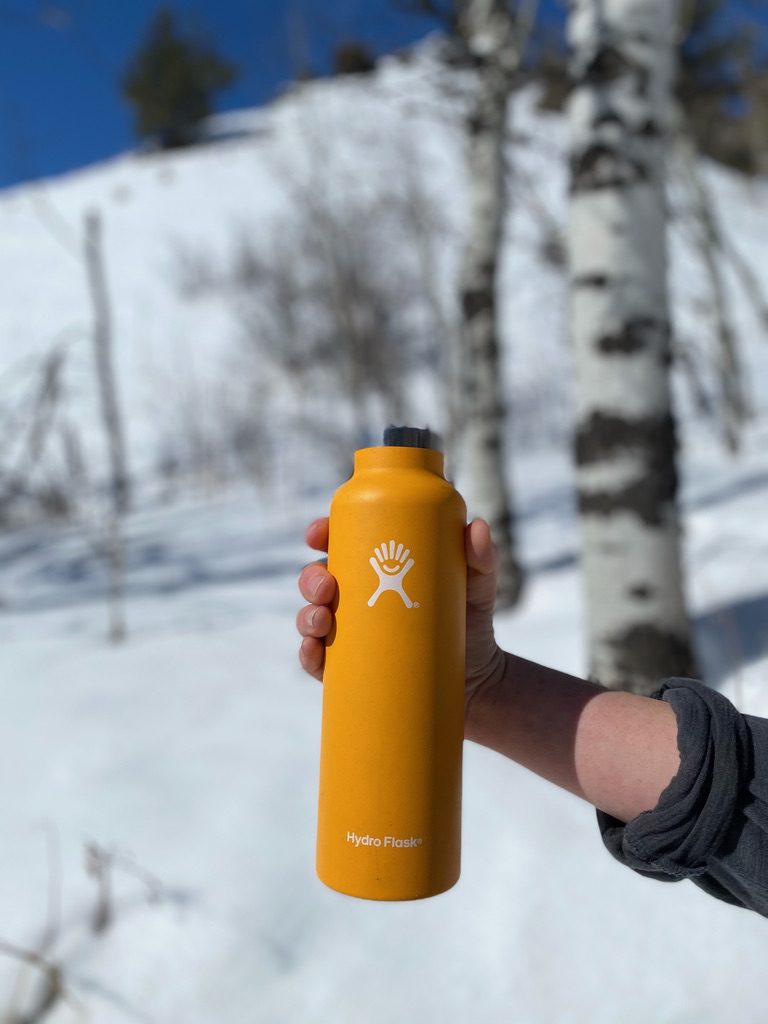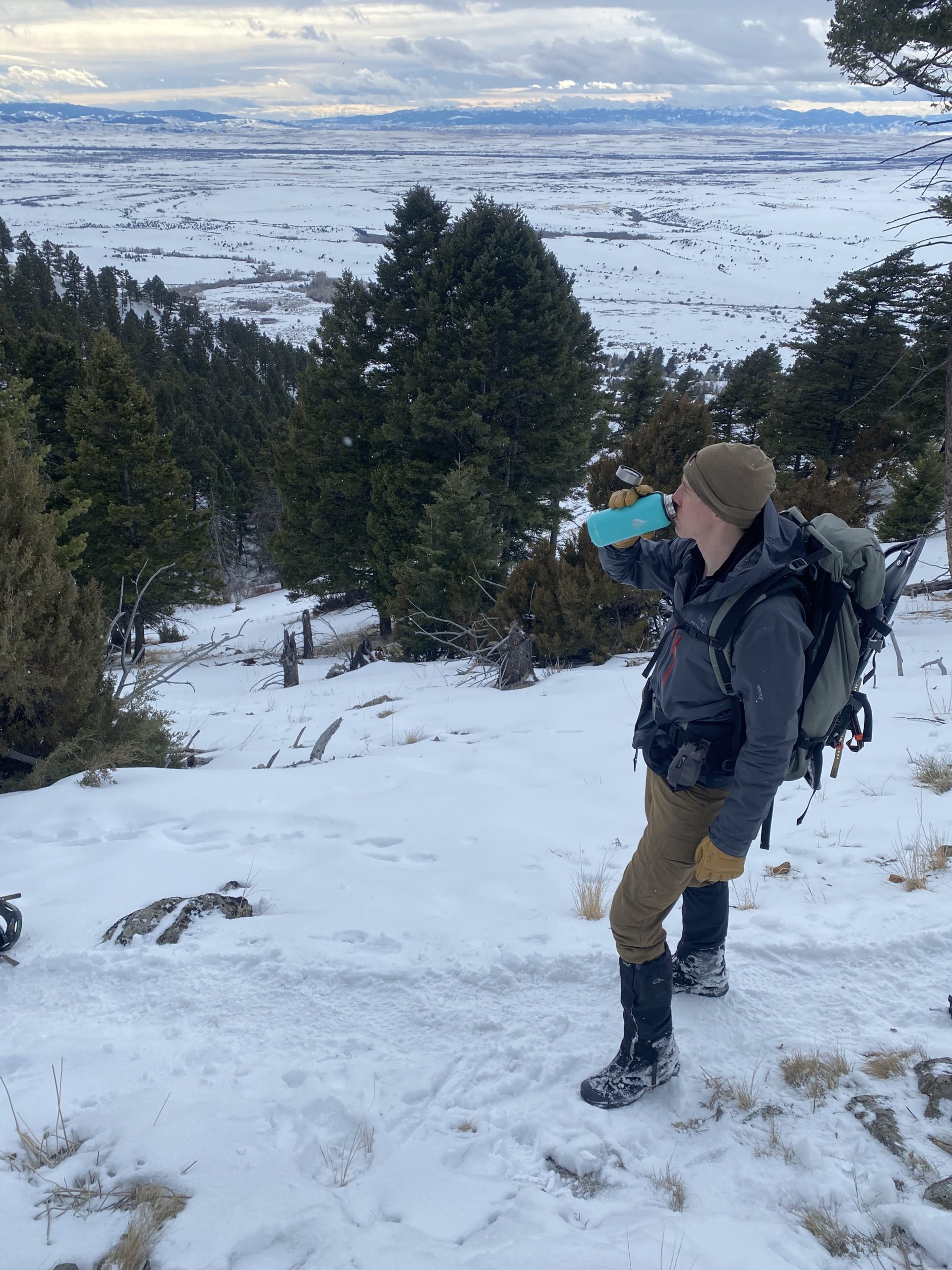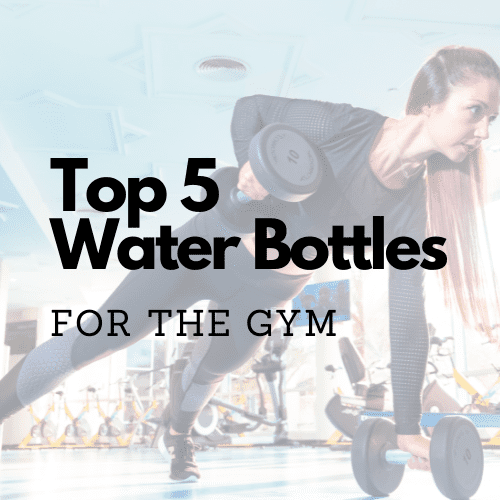Best Water Bottles for Hiking
About Our Selection Process
The HydrationReview team tapped the experience of several reviewers for this article with hiking experience ranging from the High Line in NYC to the Continental Divide Trail in the Mountain West.
HydrationReview identified the best options across four categories of hiking water bottles: backpacking, international hiking, day hikes and hiking in extreme temperatures. Each circumstance will require slightly different bottle specifications. For instance, when walking or hiking through NYC there will be many opportunities to stop and refill a water bottle, so we would recommend a smaller, lightweight 16oz bottle. Whereas a hike in the Hill Country is going to be hot and there will be limited opportunities for refilling favoring a larger, 32oz insulated bottle.
Some characteristics like price, weight and seal are relevant for all types of hiking. Wherever you go, a lighter bottle is typically better, no one wants to overpay and a leaky bottle will cause problems. We took these qualities into mind for all the bottles we’ve reviewed.
We developed these recommendations knowing there are nuances across our reader’s needs and for that reason, we encourage you to read through at least a couple of categories to get a sense for the different criteria we consider and perspectives of multiple reviewers. If you have any further questions, please feel free to reach out to us!
Best Water Bottle for Backpacking
Nalgene Wide Mouth
Lightweight and Durable
Effortless Seal
Still Made in the USA
The best bottle for backpacking is without a doubt the Nalgene Wide Mouth. We estimate that 9 out of 10 thru-hikers on the Appalachian Trail prefer this bottle for all the reasons we describe. Author and TV show host, Steve Rinella, almost exclusively carries this bottle on his trips to remote locations ranging from Alaska to Mexico. The HydrationReview team also tested this bottle extensively in many conditions to draw our on opinions. The result? An unequivocal admiration for the Nalgene.
You might ask, what makes this bottle so great? Well, it boils down to the demands of hydration while backpacking; weight, durability and ease of use are paramount.
When hiking up a mountain with all of your gear on your back, every ounce saved makes the journey a little easier. The Nalgene is made of single walled plastic, weighing in at a mere 6.25 ounces (when empty). Compare that to the Yeti Rambler at three times the weight! Even with forty pounds on your back, the difference of 12 ounces is noticeable.
Drops and bumps are an inevitable part of hydration on the trail and with enough time, your bottle will encounter situations that will put it to the test. Thankfully, Nalgene uses a BPA free Tritan plastic that is nearly indestructible. In one case, a reviewer carrying the Nalgene slipped on a wet rock, and in the moment, the bottle slipped out of her bag and bounced more than 50 feet down a mountain scree field. Once recovered, it was still in great condition. Over time and with enough use you should expect a few scrapes on the outer surface of the bottle, but we think a worn Nalgene looks better anyways.
The next category to highlight is the seal. A small leak on an improperly closed bottle can actually become life threatening in some backpacking conditions. Serious backpackers know that a wet sleeping bag can be dangerous if the temperature falls below 50°F at night since down sleeping bags lose almost all of their insulative power when wet. Aside from an unexpected rainstorm, one of the most common ways the contents of a backpack get soaked is by a leaking bottle. Thankfully, the cap of the Nalgene easily connects with the threads of the bottle and there is little opportunity for a crooked placement resulting in leaks.
The only drawbacks to backpacking with this bottle are its lack of insulation and ability to use over a stove. When hiking in really cold weather, water will start to freeze making it hard to drink from this bottle. An additional neoprene sleeve is necessary to buffer the temperature and keep the water in a liquid state. While not a big deal, it is an extra piece of gear that will need to be packed and looked after.
In survival situations, boiling can be the only way to treat water. Unfortunately, the Nalgene can’t be heated over a flame. Don’t even attempt this as we can promise you the plastic will melt. This is definitely not a deal breaker, but serious backpackers should consider bringing a single-walled metal bottle or cup in case of a survival situation.
The Nalgene is a tried and true bottle that has now been in use for decades and it’s still made in the USA. If you’re planning on going backpacking and need a water bottle, look no further.
Best Water Bottle for International Hiking
Grayl GeoPress
High Quality Filtration
Easy to Operate
A Cheap Insurance Policy for Your Next International Trip
Headed to Thailand or Patagonia for a holiday and you plan to do some hiking? Before you throw your everyday water bottle into your bag and check it off your packing list, consider why a filtered water bottle may be a better pick.
Many foreign countries in the developing world offer tap water that isn’t safe for Americans. The dangers can range from a mild upset stomach to life threatening diarrhea. Sometimes bottled water is available and tap water can be avoided, but when spending time in rural areas of developing countries, as many travelers do while hiking, access to bottled water is usually hard to come by. Drinking from streams or natural water sources while out hiking is definitely not advised either.
The best filtered water bottle will serve all the same functions as your favorite day-to-day bottle, but also provide advanced filtering capabilities for safe drinking water. When considering a filtered water bottle, be sure to evaluate for durability, filtering credentials and ease of use.
With this criteria in mind, we selected the Grayl GeoPress as the best bottle for international hiking. The HydrationReview team tested some of the top filtering water bottles in many real world conditions and have confidence that this is the best bottle available for the job. The Grayl was tested across several hiking trips including a multi-day trek in the rugged and beautiful Teton range of Wyoming.
The GeoPress is a relatively lightweight, but durable package, offering 24oz of capacity and only weighing 15.9 ounces. It is made from a tough plastic that is strategically reinforced around the top and bottom of the bottle. The design works well; over the course of testing, reviewers didn’t report any damage to the bottle from accidental drops. The main limitation is temperature: the filter can only sustain 1-2 freeze and thaw cycles before it needs to be replaced.This presents an issue if you are traveling to a colder part of the world.
When looking at all filtering bottles available for purchase, it’s imperative to read the fine print describing the filter. Many filters are only meant to remove certain minerals and chemicals to improve the taste and don’t filter out pathogens such as giardia (a commonly encountered parasite in untreated water). The GeoPress on the other hand, removes 99.99% of viruses, 99.9999% of bacteria and 99.9% of protozoan cysts while also meeting EPA standards for testing microbiological water purifiers. You’ll feel safe drinking water out of this thing!
Other filtered water bottles we tested had decent durability and some even provided solid filtration, but the GeoPress really distinguished itself from the pack during ease of use testing. In under 30 seconds, a user can fill up the bottle, press the filter and have clean drinking water at their disposal. While the manufacturer states that pressing the filter only takes eight seconds, we found it to be slightly higher. Even so, that 30 seconds is much faster than other conventional filtering options like a UV light.
Maybe you won’t end up needing it, but bringing a GeoPress on your next international hiking trip is a cheap insurance policy against the misery of contracting a waterborne pathogen. We certainly think it’s worth the price.
Best Water Bottle for a Day Hike
Hydro Flask
Comes in a Variety of Sizes
Great for Mixing in Electrolytes
Fits in Your Backpack
Hydration needs on day hikes will vary considerably and it’s Important to take note of the conditions beforehand and plan accordingly. How hot will it be? Will you be in full sun? Are there spots to refill your bottle on the trail? Circumstances can vary widely and each outing deserves proper planning. For example, a day hike up a fourteener in Colorado (mountain that exceeds 14,000 feet) requires a substantial amount of water (potentially 4+ liters) while a 3-mile hike through the Blue Ridge Mountains in April may only require 1 liter. If you don’t have the experience to research the conditions and make a judgment, consult with a nearby outdoor shop like REI for advice.
When looking for a water bottle to bring on your hike make sure to check its capacity, evaluate the ease of use and give some thought to how it will fit into your pack or if it’s suitable to carry in your hand.
Capacity is fairly straightforward. Bigger bottles are better for longer hikes that require more hydration. The caveat to this is that we actually recommend sticking with a bottle that is 32oz or under and carrying the rest of your water in a collapsable bladder such as the Platypus. The bladder can be used to refill the water bottle and is significantly lighter than carrying additional water bottles. The ease of which the bottle can be handled is critical as well: if you find the bottle to be unwieldy and awkward to drink from then it will discourage hydration.
Finally, give some thought to how the bottle will be carried and make sure it’s comfortable. Does it fit in the side pocket of a backpack? Is it comfortable to hold?
Taking into account all of these criteria, HydrationReview primarily endorses one style of bottle for day hikes: the 32oz and 20oz Wide Mouth Hydro Flasks. Our testing of these bottles revealed a high quality and durable product designed for outdoor pursuits. With a thin layer of insulation, the water temperature was moderated without excessive weight. The bottle fit well in most backpacks and the handle was convenient for attaching a carabiner to secure the bottle to the pack. Reviewers found the lid easy to operate, while also being wide enough to allow ice to be added or the easy transfer of water from a bladder into the bottle. For a more detailed review of the Hydro Flask check out the Hydro Flask Review Page.
Best Insulated Water Bottle for Hiking
Hydro Cell
Optimal Combination of Insulation and Weight
Highly Durable Design
Offers Plenty of Capacity Without Being too Bulky
The most important aspects to consider when finding the right bottle are weight, insulation ability and shape. Insulation requires additional material in the bottle that makes it heavier. Usually, the better the insulation the heavier it will be. The HydrationReview team believes in finding a sweet spot between the two characteristics that makes it light enough to carry while still being effective at moderating temperature. The last trait to keep in mind is the shape of the bottle. Insulated bottles can be bulkier, either wider and/or taller and an awkwardly shaped bottle can be hard to carry and use.
The HydrationReview team had ample opportunities to test a wide range of insulated bottles during some of the recent extreme weather events taking place in North America. The results definitely backed the Hydro Cell 32oz. It was the goldilocks in terms of its combination of size and weight, using a very efficient insulation that provided high performance while not being excessively heavy. The Hydro Cell was found to be extremely durable and easy to use, especially with the insulated screw-on cap. The only downside is the hand-washing requirement. If you plan on mixing electrolytes in your Hydro Cell, be prepared to spend a few minutes scrubbing it with a bottle brush.
If you plan on hiking in extreme temperatures, it may be necessary to bring an insulated bottle. We highly recommend the Hydro Cell.

